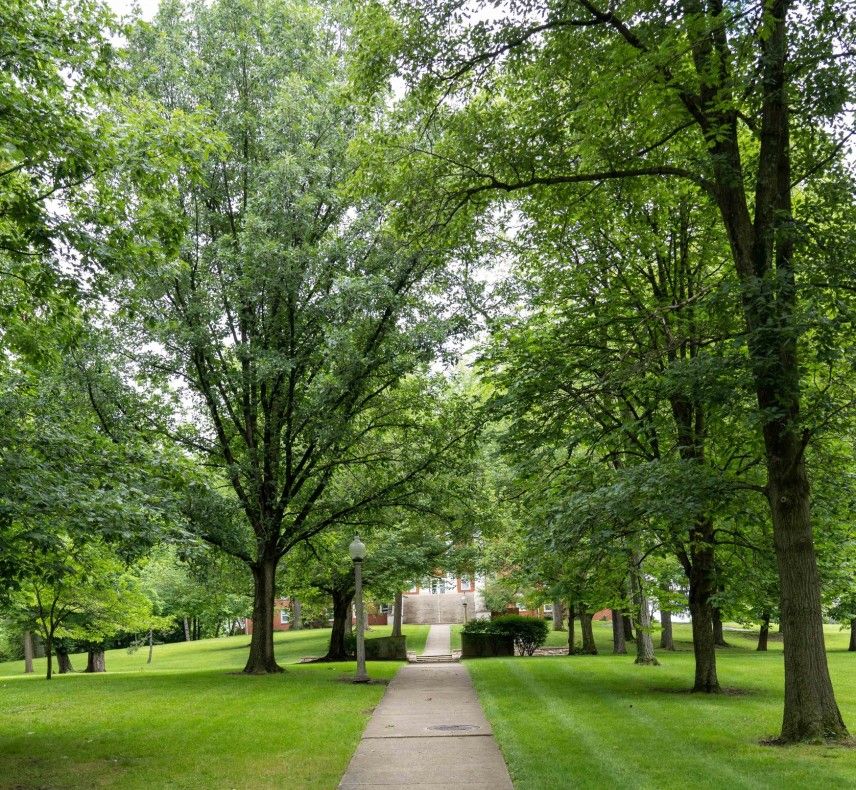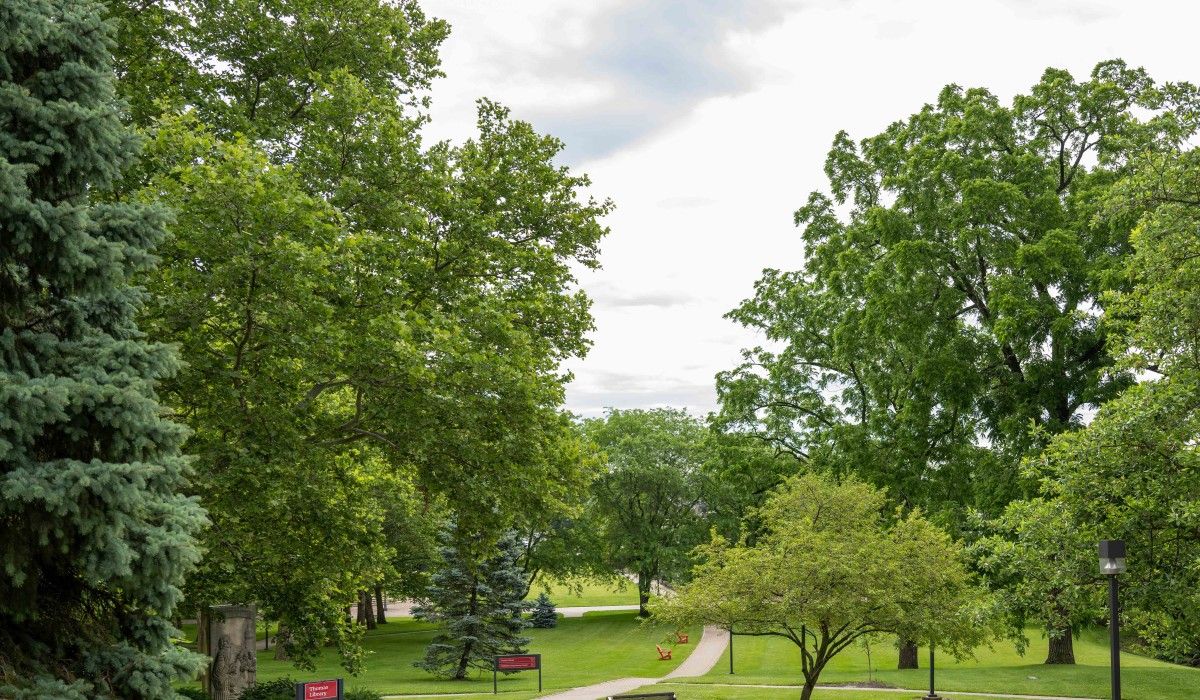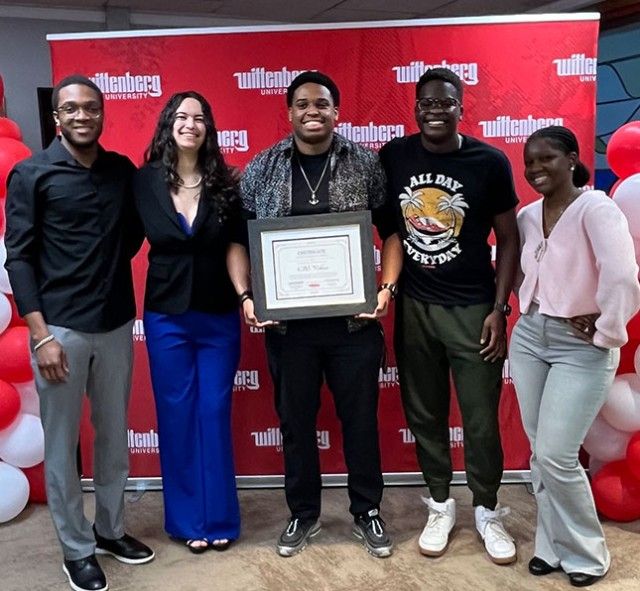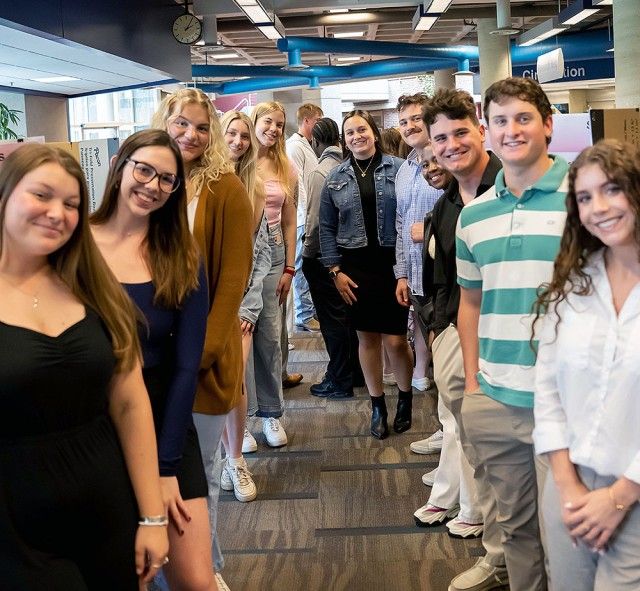Wittenberg’s rolling hills, welcoming hollows, and its vast treasure trove of trees spanning more than 100 acres have always captured the hearts of students, faculty, staff, alumni, and friends. Now, thanks to the efforts of Matthew Collier, award-winning professor of biology, and Dan McDermitt, director of facilities management, the campus’ collection of trees has achieved a new status – official Level 1 ArbNet Accreditation, which denotes the University as an official arboretum.
Among America's most beautiful college campuses, Wittenberg has invested in its tree-rich environment since 1845, trimming and caring for its arboreta across generations. Such attention to detail has not gone unnoticed, as students, employees, and visitors often praise the retreat-like setting that forms beneath the carefully managed canopy of trees.
“Seeing what our campus has to offer, Matt and I both thought it would be wonderful for Wittenberg to become an accredited arboretum, so it’s exciting to know that our efforts to earn this accreditation were well received,” said McDermitt, who recently received the prestigious Certified Educational Facilities Professional credential.
Receiving Level 1 ArbNet accreditation required extensive self-assessment and arboretum-related documentation on everything from plans, governance, and the number of species, to staff/volunteer support, education and public programming, and tree science research and conservation. With regard to species, ArbNet also requests that any collection “contain a minimum number of 25 species, varieties or cultivars of trees or woody plants that have been planted and are growing in accordance with the arboretum plan,” as per the organization’s website. Currently, Wittenberg has more than 125 total species, including some uncommon trees for this part of the country.
“At Wittenberg, visitors will find the Incense Cedar, a tree native to Northern California and Oregon, along with the Dawn Redwood, currently listed as a ‘threatened wild species,’ which is distributed in the eastern, southern, and western parts of the United States,” Collier explained. “We also have Bald Cypress, often found in damp, swampy soils in the southeastern United States, and Ginkgo, one of the oldest living tree species in the world with a history of medicinal benefits.”
A botanist, ecotoxicologist, 1994 Wittenberg graduate, and the 2023 recipient of the Alumni Association Award for Distinguished Teaching, Collier brought his extensive expertise to the accreditation process, completing the majority of the paperwork needed for the application. Facilities management provided additional support.
“Choosing Wittenberg as my own college home years ago was influenced in great part by the beauty of this campus,” Collier said. “In my 27 years of teaching future biologists and botanists at Wittenberg, I can say that the campus continues to be just as beautiful, which makes the official arboretum status all the more rewarding – not just for our current campus, but for our extended community and future students who want to experience a living-learning environment like the one we are blessed to have.”
Collier found an advocate in Alan Stewart, M.D., a 1969 Wittenberg graduate and member of the University’s Board of Directors. Back in 2020-21, during COVID, Stewart first brought up the idea of attaining arboretum status and helped to get the ball rolling.
“Alan’s encouragement, assistance, and support inspired us to continue our efforts to complete the accreditation process,” Collier said.
Both Stewart and Collier also took inspiration from the late Ron deLanglade, beloved professor emeritus of biology and a botanist himself, who served on the Wittenberg faculty for nearly 46 years, retiring in 2016. Early in his tenure, deLanglade began to take a sincere interest in the campus’ tree population, personally selecting young trees from the nursery and then mapping out the spots where they would be planted.
Spurred by the beauty, deLanglade also started to extend his biology classroom into the acres and acres that surrounded the science facility. To help create his "living laboratory," he and student Nissa Karr produced the first map of campus tree varieties during the 1985-86 academic year. Additionally, through ongoing field tests, tours, and continued mapping, he worked to educate and encourage countless students to look across campus and see not a lovely wooded scene but a whole tapestry of diversity.
On April 29, 2023, deLanglade passed way, yet his "tapestry" remains, as do to the field study programs he established, including the popular one at the Gerace Research Center in San Salvador, The Bahamas. Mark Goheen, retired longtime superintendent of grounds and a certified arborist, also shared deLanglade's passion, as the two partnered on ensuring that the trees and wooded landscape received the attention they deserved with regular fertilizing, watering, trimming, and more.
With Level 1 accreditation now secured, Collier and McDermitt will continue to carry the mantle as they work to determine the best types of trees to serve as replacement plantings when and where needed.
“We are hoping to plant native trees on campus as these have high survival potential and are truly indicative of what grows in this part of the country,” Collier said.
Consistent with Wittenberg’s tradition of excellence in collaborative student-faculty research, Collier has also engaged a student researcher, Sarah Fitterer, class of 2025, in the overall effort. An environmental science major from Newark, Ohio, Fitterer is currently helping to tag up to 400 Wittenberg trees.
“We’ve already tagged 100, and we will create a file that lists the tag number, common name, and scientific name of each tree,” Collier explained. “We then plan to create copies of these lists, which can be picked up in the newly established ‘Arboretum Resource Room’ in the Barbara Deer Kuss Science Center.”
Collier and McDermitt also plan to research additional outreach and engagement opportunities that further promote the campus’ beauty and newly achieved arboretum status. One such opportunity will be during the University’s fall Homecoming celebration, Oct. 3-6, 2024, when Collier and fellow science colleague John Ritter, professor of geology and 2013 Ohio Professor of the Year, look to share an interactive tree map with alumni and friends. The two are presently in the process of developing the foundation for what could be a virtual tour of the varied species of trees.
“We would like to create an online database, along with QR codes, that reference some of the trees on campus and link them to informational websites,” Collier said.
Created to establish and share a widely recognized set of industry standards for the purpose of unifying the arboretum community, ArbNet is the only international program of accreditation that is specific to arboreta. Any arboretum or public garden with a substantial focus on woody plants may apply. The entire program is free of charge. To learn more, visit Arbnet’s website.








